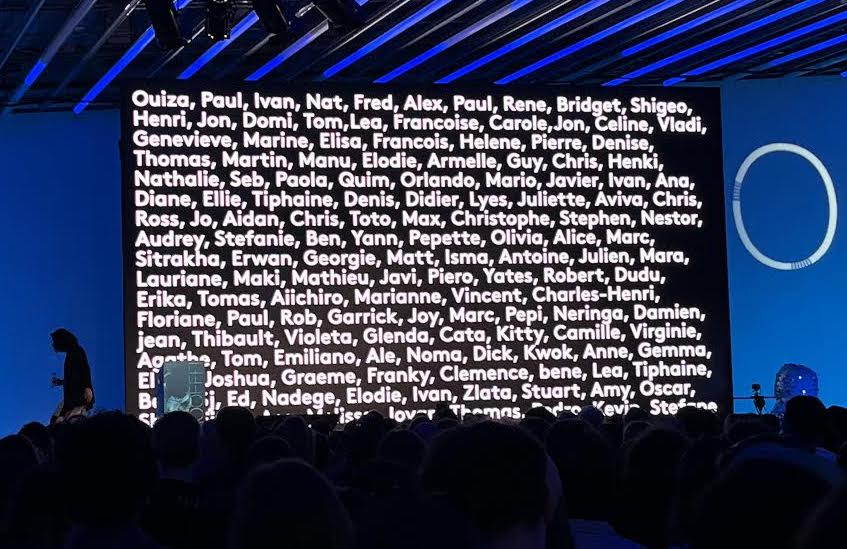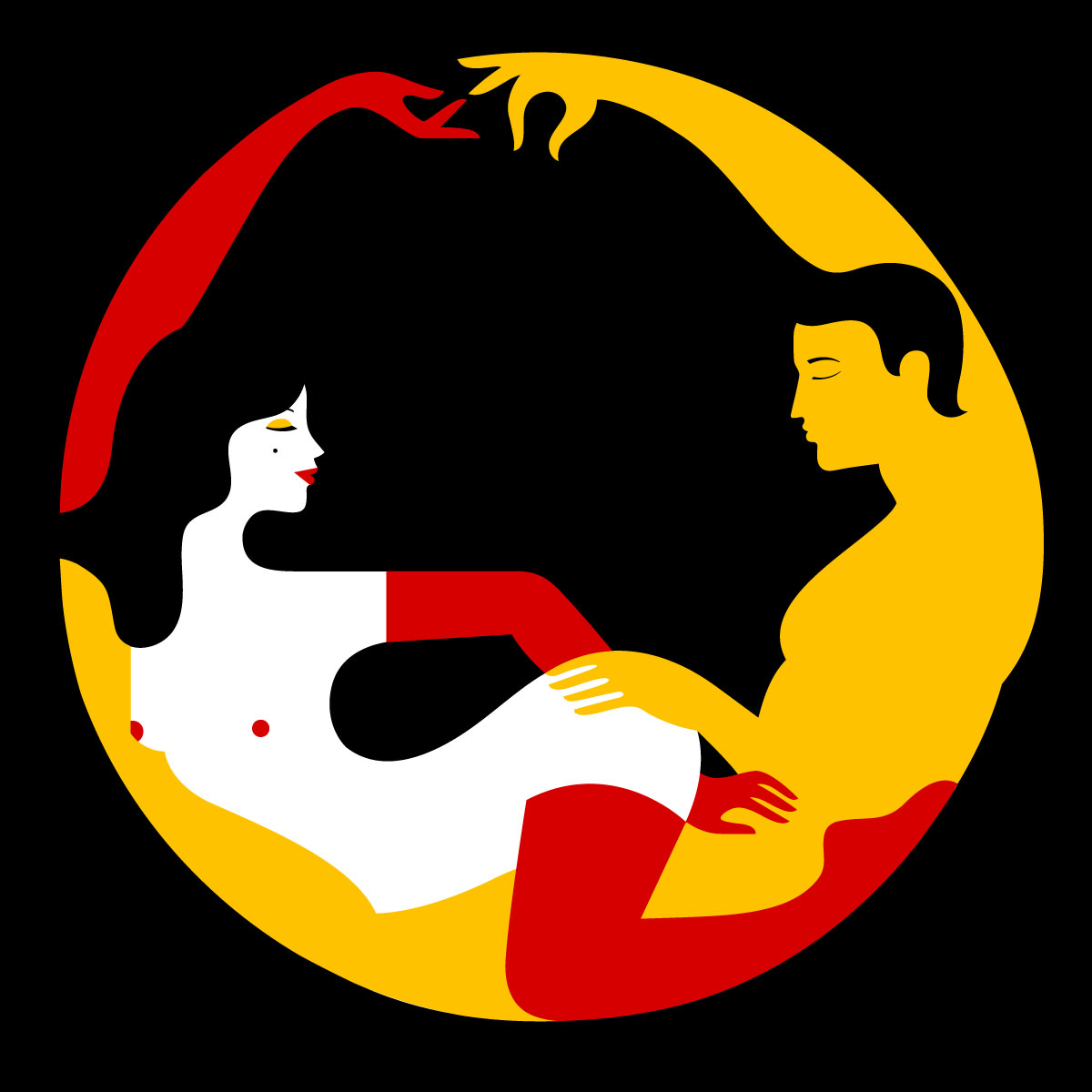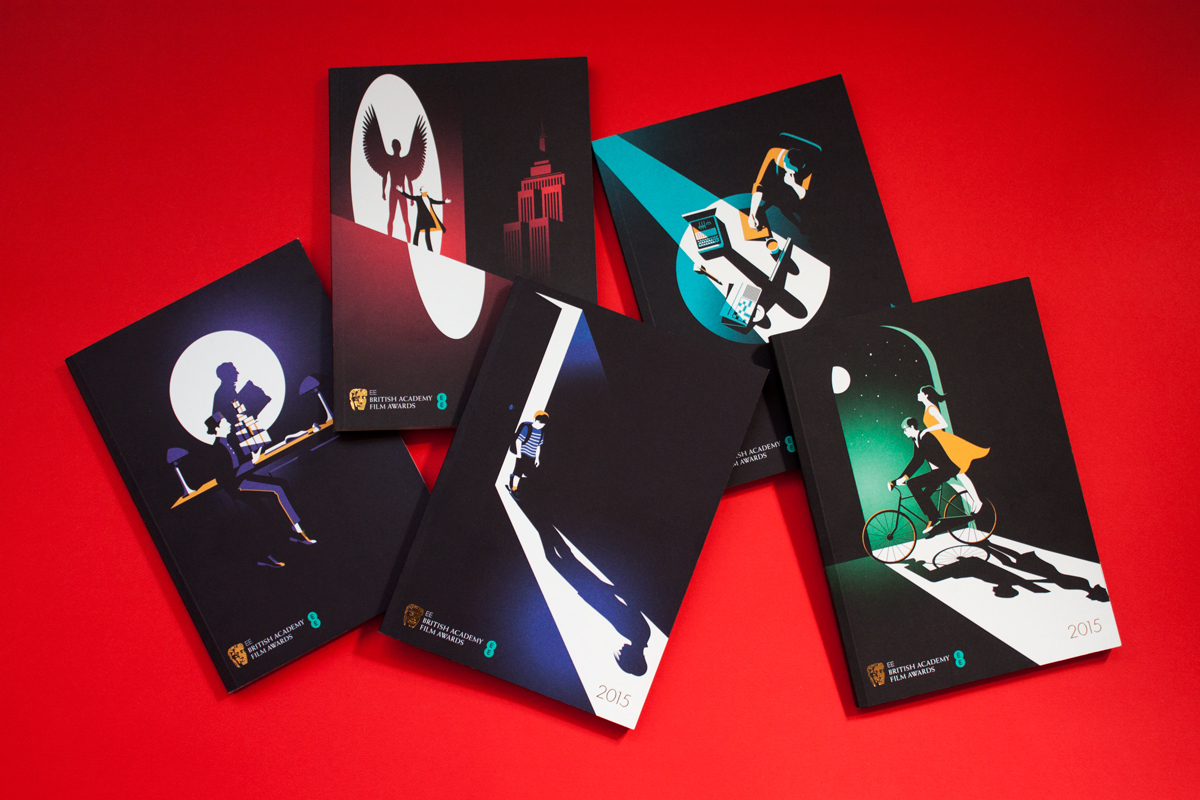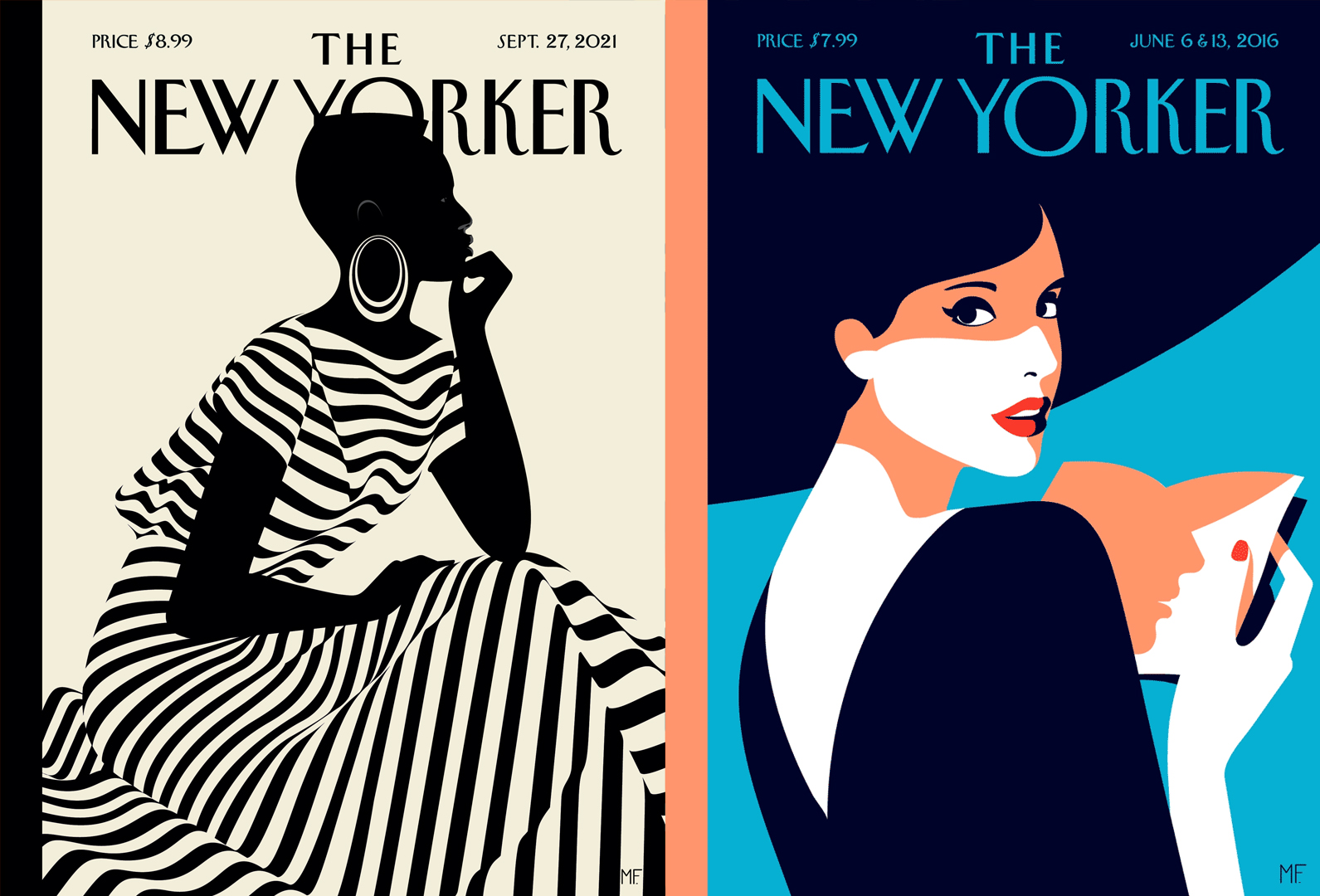Illustrator Malika Favre on working with people
"To make good deals, make good friends."

Barcelona-based illustrator Malika Favre is famed for her deceptively minimal style, which has adorned covers of The New Yorker, Vogue and more. And if you have an iPhone, you might find a few pieces of hers hiding in the wallpaper menu. With clean, bold illustrations and elegant geometry, her work is unmistakable.
At OFFF Barcelona 2022, Favre took an innovative approach to the design talk. Rather than her own life or career, she structured it around the people who have inspired and helped her along the way – "because whether you work with brands or individuals, you're working with people." Here are just a few of the many names she mentioned. (Inspired to start drawing? Check out our guide on how to download Illustrator.)

Nat, Fred and Alex

Nat, Fred and Alex were the founders of Airside, the multidisciplinary design studio Favre joined in 2004. "The great thing about the studio was that they had a shop," she explained. This acted as a virtual circle to keep designers challenged and interested. It was here that Favre created her first "sexy alphabet" – the starting point for what would eventually become her sensational Kama Sutra typeface. Favre stayed at the studio for 5 years, building her own personal aesthetic, before deciding to go freelance.
Paul Willoughby

Paul Willoughby is the former creative director of Little White Lies, and created or commissioned 47 of the magazine's iconic illustrated covers. Willoughby supported Favre right at the beginning of her freelance career, inviting her to submit 70's-inspired art for a movie poster exhibition at London’s Kemistry Gallery.
"I always really wanted to do one of the Little White Lies covers," Favre admitted, but it wasn't to be – Willoughby left to co-found design agency Human After All. But he then presented an even bigger job to Favre: designing the identity for the BAFTAs, "a project that changed my life."
Françoise Mouly

Françoise Mouly has been the art editor at The New Yorker since 1993. "If the New Yorker asks, you're going to say yes," Favre says. After providing many smaller illustrations for the magazine, she was approached by Mouly to explore designing covers – and has now created 13.
“The images really have a resonance, people will see this work," Favre said of working with the New Yorker. "It made me realise the responsibility and opportunity - empowering women, championing diversity.”
Get the Creative Bloq Newsletter
Daily design news, reviews, how-tos and more, as picked by the editors.
Henri
"Henri was my grandfather," Favre says. "He was an amazing businessman, and I inherited his sense of order and love of numbers and excel sheets." He taught the artist two important life lessons – firstly: 'To make money, you have to spend money.' "This taught me to delegate and hire people, and also to invest in myself, in travel, in taking time off. It’s not frivolous, it’s an investment."
His second life lesson was, 'To make good deals, make good friends.' This was the inspiration behind Favre's people-based talk. "These are some of the most important people in my life," she says.
Read more:
- I went to an NFT art exhibition, and it was weird
- Adobe Illustrator tutorials: 41 lessons to boost your skills
- Adobe Illustrator review

Thank you for reading 5 articles this month* Join now for unlimited access
Enjoy your first month for just £1 / $1 / €1
*Read 5 free articles per month without a subscription

Join now for unlimited access
Try first month for just £1 / $1 / €1

Daniel John is Design Editor at Creative Bloq. He reports on the worlds of design, branding and lifestyle tech, and has covered several industry events including Milan Design Week, OFFF Barcelona and Adobe Max in Los Angeles. He has interviewed leaders and designers at brands including Apple, Microsoft and Adobe. Daniel's debut book of short stories and poems was published in 2018, and his comedy newsletter is a Substack Bestseller.
